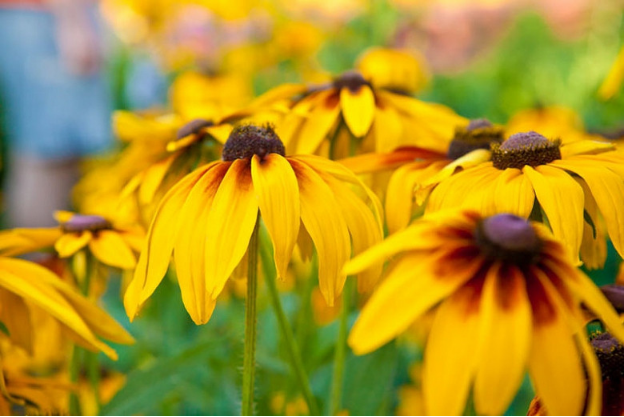

Gloriosa Daisy, Black-eyed Susan,Yellow Ox-eye Daisy, Brown-Eyed Susan, Brown Betty, Golden Jerusalem, English Bull's Eye , Yellow Daisy (Rudbeckia Hirta)
Rudbeckia hirta, commonly known as Black-Eyed Susan, Gloriosa Daisy or Yellow Oxeye Daisy is a cheerful, widespread prairie plant that belongs to the Asteraceae family. It is renowned for its showy golden, orange or bicolor flowers, adorned with up to 8-20 rays and dark chocolate, dome-shaped cones. Blanketing the landscape with its dazzling bright blossoms for months, it is ridiculously easy to grow and largely trouble free.
Blooming profusely from early summer to frost, Black-Eyed Susans provide weeks of eye-catching color, decorating borders and meadows
| Requirement | |
|---|---|
| Hardiness | 3,4,5,6,7,8,9 |
| Heat Zones | 1,2,3,4,5,6,7 |
| Climate Zones | 1, 2, 3, 4, 5, 6, 7, 8, 9, 10, 11, 12, 13, 14, 15, 16, 17, 18, 19, 20, 21, 22, 23, 24 |
| Plant Type | Perennials |
| Plant Family | Aster |
| Exposure | Full Sun |
| Season of Interest | Summer, Fall |
| Height | 1' - 2', 2' - 3' |
| Spread | 2' - 3' |
| Water Needs | Average |
| Maintenance | Low |
| Soil Type | Moist but Well-Drained, Clay, Loam, Acid, Alkaline, Neutral |
| Characteristics | Dried Arrangements, Cut Flowers, Showy, Attracts Butterflies, Attracts Hummingbirds, Clay Soil Tolerant, Deer Tolerant, Drought Tolerant |
| Garden Styles | Cutting Garden, Informal and Cottage, Prairie and Meadow |
| Planting Place | Beds and Borders, Patio and Containers |